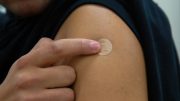One need only to look at the more than 100 pages of comments on Cbc.ca following the website’s story on the approval of the H1N1 vaccine to get a snapshot of public mistrust of vaccines in general, and the H1N1 vaccine in particular. Given the public interest, it seemed only natural to devote this week’s edition of “Better know a prokaryote” to the often misunderstood and unfairly disparaged vaccine.
History of vaccines
Louis Pasture, the famous French Chemist, is credited with developing the definition of a vaccine as “a suspension of live or inactivated microorganisms or fractions thereof administered to induce immunity and prevent infectious disease” in the late 1800s. However it wasn’t Pasture who came up with perhaps the most famous early vaccine.
In 1796 a British doctor, Edward Jenner, performed what is widely thought to be the world’s first intentional vaccination. Working with local knowledge that people who had been previously exposed to cowpox — a relatively harmless cousin of smallpox, resulting in rashes and pustules — were generally immune to outbreaks of smallpox, Jenner wondered if he could prevent people from contracting smallpox by deliberately infecting them with cowpox.
To that end he collected puss from the cowpox sore on the arm of a milkmaid and used it to inoculate a young boy named Phillip. Six weeks later Jenner exposed Phillip to smallpox. Much to his delight — and surely Phillip’s relief — the boy did not contract the deadly disease.
Today we have many vaccines protecting us from many potential sicknesses, such as measles, diphtheria and polio, to name just a few.
How a vaccine works
When speaking about the human immune system, it is important to define the two primary types of immunity. The first — innate, or non-specific, immunity — is what you are born with, and it protects us at sites where we most often come into contact with the outside world. These defenses include: fatty acids secreted onto the skin, making it an inhospitable environment for many microorganisms; enzymes in saliva and tears; and our own bacteria, which act as tenants on our body, hogging all the good spots.
The second — acquired immunity — is the ever-changing, do-everything superstar of the immune system. It remembers antigens (a fancy word for foreign objects in your body, such as bacteria, viruses and allergens) that it has previously come into contact with and helps to direct appropriate responses to future encounters.
The acquired immune system can be slower at responding to an invader than the innate system. However, often after just a few encounters it can mount a much more effective defense than the innate system.
The point of a vaccine is to expose the acquired immune system to parts of a pathogen it will recognize — such as the protein casing of a virus — before your body encounters the real thing. This has the effect of speeding up your response time to a pathogen and improving your chances of repelling a potential invader. This is what Jenner accomplished when he inoculated Phillip with cowpox, and what almost all vaccines do.
Vaccine controversy
It is impossible to mention vaccines without acknowledging some of the controversy that surrounds them. Since the large-scale smallpox vaccinations of the 1800s, anti-vaccinationists have protested the administration of vaccinations. Whether the objections are to the forced nature of some vaccines, or made on the principal that vaccinations are dangerous, as long as there have been vaccines there have been protesters.
Modern day protesters range from individuals who do not believe vaccines are safe, to those who refuse them on the grounds that they are ineffective and unnecessary. Possibly the most famous examples of someone questioning the safety of a vaccine appeared in a paper published in the journal Lancet, in 1998. In his paper, which has subsequently been discredited, Dr. Andrew Wakefield argued that the injection of the measles, mumps and rubella (MMR) vaccine could be linked to the development of autism in children. This claim is now considered to be baseless by a very large majority of health professionals, although the publishing of the paper had huge public health ramifications.
Following the publication of Wakefield’s paper, voluntary MMR vaccination rates in the UK dropped from a high of 93 per cent to as low as 50 per cent in some areas, and has been blamed for once again making measles commonplace in the UK.
In short, vaccinations have all but eliminated many of the diseases that were responsible for childhood mortality, and are an important component in our control of pathogens, such as the influenza virus. By getting a vaccine, you are not only protecting yourself, but you are also protecting those around you, and that makes you a hero!




